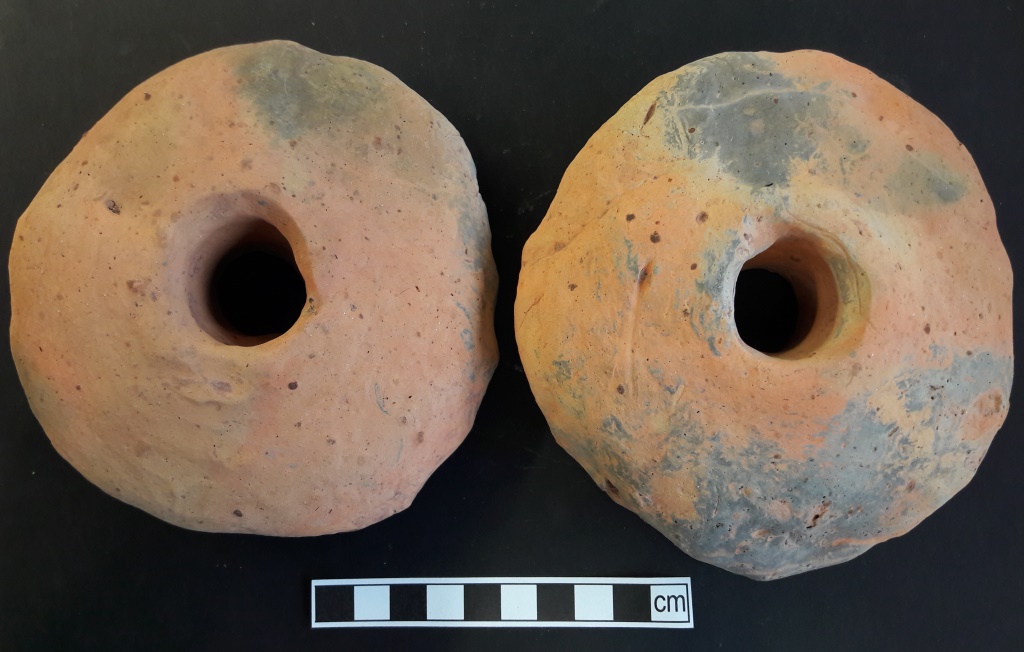Find of the Month – October 2017
- 1st November 2017
During the early medieval period someone made several doughnut shaped rings of fired clay. Sometime later, these were placed in a pit. Around 1000 years later we excavated the same pit and found two whole and one fragmented ceramic rings.
October’s find of the month are loom weights from one of our ongoing excavations in Herefordshire. Loom weights were mostly used with warp weighted looms. These simple looms consist of two upright poles supporting a vertical bar, over which threads (the warp) hang. The warp threads are tied at the bottom to weights, which keeps them taut whilst horizontal threads (the weft) are threaded between to make cloth. Warp weighted looms are thought to have been used in England from the Neolithic to early medieval period, when two beam looms, that tied the warp to a fix bottom bar, became more common.

Two loom weights recently excavated in Herefordshire – note possible fingerprints on lower right edge of lefthand loom weight
Looms weights were usually made out of whatever material people had nearest to hand. Some are stone, others fired or dried clay. It is possible that one of our weights still bears the imprints of fingers that picked it up whilst damp. Any potential fingerprints on the other have been lost due to heavy damage on one side, probably from clattering against other weights during use.

Use damage to ceramic loom weight?
Whilst we are certain that these objects are weights, there are also such things as thatch weights. Large weights are often assumed to be loom weights without considering the possibility of another purpose. In this particular case, it is most likely that these objects were tied to threads on a loom, as at 545g and 657g they are lighter than expected for weights designed to keep a thatch down.
So, we now think that these artefacts are loom weights and know how they were used. ‘But why are they doughnut shape?’ I hear you ask, ‘and how do you know they are early medieval?’
The answers to those two questions are closely linked. Throughout time people have made different shaped loom weights depending on their cultural preference – no one shape is superior to another. Triangular weights were more common during prehistory and ring, or annular, shaped loom weights were the norm in Anglo-Saxon times. The earliest Anglo-Saxon loom weights are relatively thin rings with large holes in the middle, but over time the central hole got smaller.
Further evidence is always good thought, as artefacts don’t always conform to general style trends. In this case, late 10th to 11th century pottery found alongside the weights supports our assumption that these are early medieval in date.

Fully excavated pit containing the loom weights
Having assessed the finds, it is now worth returning to our excavation site to think about where these loom weights were found. Stacked together on top of four flat stones, someone had deliberately placed the weights into a flat based pit, roughly 60cm in diameter. Charred seeds or grains, pottery and charcoal had been put in on top of the stones and loom weights, although fragments of a broken third weight within the fill implies that everything went into the pit at the roughly the same time. Taken together, it looks like a collection of household rubbish after a good sweeping out. Rubbish, of course, is often an archaeologist’s best friend.
Nina O’Hare
Post a Comment